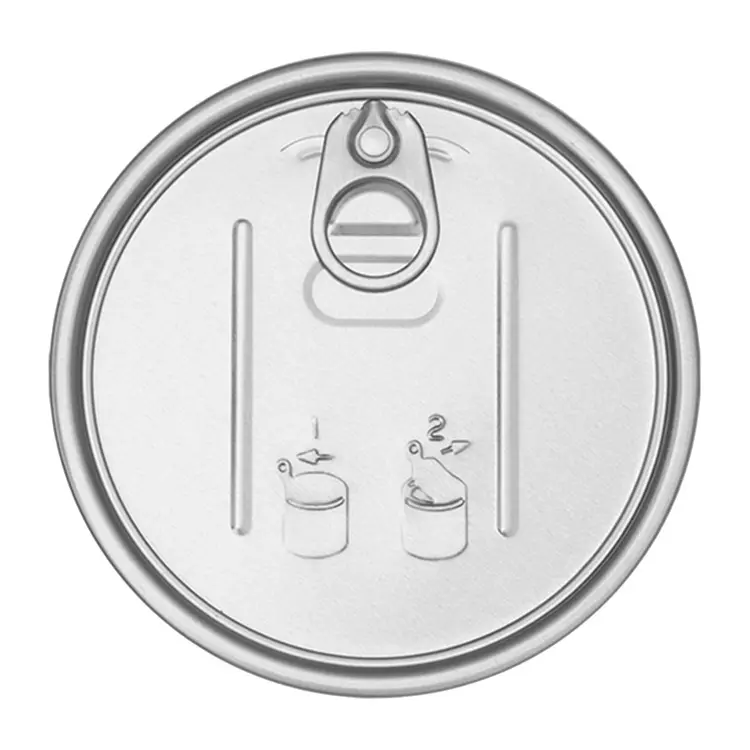In the world of food and beverage packaging, a lid of a can might seem like a minor detail. Yet, for B2B professionals in manufacturing, food processing, and distribution, this small component is a critical factor for product integrity, consumer safety, and brand reputation. From preserving freshness to ensuring a tamper-proof seal, the design and quality of the can lid are paramount to a successful product journey from the factory floor to the consumer’s hands.
The Critical Functions of a Can Lid
A can lid, also known as an end or top, is a highly engineered part that performs multiple vital functions.
- Hermetic Sealing: The primary function is to create an airtight and liquid-tight seal. This hermetic seal is essential for preventing spoilage, maintaining product freshness, and extending shelf life. It also keeps out contaminants and microorganisms, which is critical for food safety.
- Pressure Management: Cans often contain products that are filled under pressure or create pressure due to carbonation (e.g., soda, beer). The can lid is designed to withstand this internal pressure, preventing bulging or bursting during transport and storage.
- Tamper-Evidence: Modern can lids, especially those with pull-tabs or easy-open features, are designed to provide clear evidence of tampering. If the seal is broken, it’s immediately obvious to the consumer, offering a layer of security and trust.
- Consumer Convenience: Innovations in can lid technology, such as easy-open ends and resealable tops, have greatly improved the user experience. This convenience is a key differentiator in today’s competitive market.
Innovations Driving the Can Lid Market
The market for can lids is not static; it’s driven by continuous innovation to meet evolving consumer demands and industry standards.
- Easy-Open Ends: The shift from traditional can openers to “stay-on tabs” and “easy-open ends” has become a standard. These designs require less force to open and are safer for consumers.
- Resealable Lids: For beverages and products not consumed in one sitting, resealable can lids provide a convenient solution, preventing spillage and keeping the contents fresh.
- Sustainable Materials: As sustainability becomes a core business value, manufacturers are exploring lighter-weight materials and more efficient production processes for can lids to reduce their environmental footprint.
- High-Resolution Printing: The surface of the can lid is now a canvas for branding. High-quality printing and embossing allow for intricate designs and logos, reinforcing brand identity.
- Safety Features: New designs are focusing on safety, with features like smoother edges to prevent cuts and improved pull-tab mechanisms that are less likely to break.
Choosing the Right Can Lid for Your Product
Selecting the right can lid is a strategic decision that depends on the product, its intended market, and brand goals.
- Product Compatibility: The lid’s material and lining must be compatible with the product to prevent any chemical reactions that could affect taste or safety.
- Required Seal Integrity: Different products require different sealing standards. A highly carbonated beverage needs a stronger seal than a canned vegetable, for example.
- Target Consumer: Consider your target audience’s preferences. Do they value convenience (easy-open)? Are they concerned about sustainability (recyclable materials)?
- Production Capabilities: Ensure your manufacturing equipment can handle the chosen can lid design and sealing process efficiently.
Summary
The lid of a can is a small component with a massive impact on product quality, safety, and market success. Its ability to provide a hermetic seal, manage pressure, and offer consumer convenience makes it a cornerstone of modern packaging. By staying informed about the latest innovations and carefully selecting the right lid for your product, you can protect your brand’s reputation and ensure a high-quality consumer experience.
FAQ
Q1: What is a hermetic seal in relation to a can lid? A: A hermetic seal is an airtight and watertight closure that prevents any gas, liquid, or microorganisms from entering or leaving the can. It’s crucial for preserving the product’s freshness and safety.
Q2: How has the rise of sustainability affected the can lid industry? A: The sustainability movement has pushed the industry to develop lighter-weight can lids, use more recyclable materials like aluminum, and streamline manufacturing processes to reduce energy consumption and waste.
Q3: Are all can lids recyclable? A: The recyclability of a can lid depends on its material. Aluminum can lids are highly recyclable and have a high scrap value, making them a key component of the aluminum recycling loop. Steel lids are also recyclable but may require different processing.
Q4: What is the benefit of an easy-open can lid for a business? A: An easy-open lid enhances the consumer experience, which can increase customer loyalty and encourage repeat purchases. It also differentiates a product from competitors that use traditional, less convenient can openers.
Post time: Aug-20-2025








